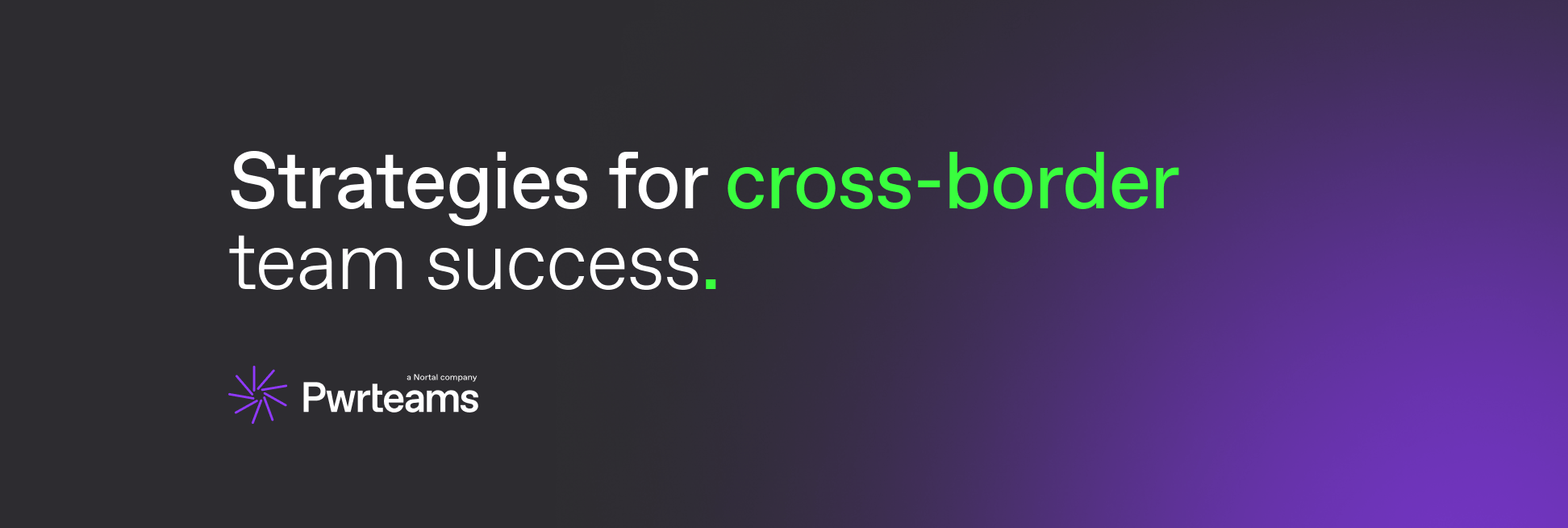Building cross-border tech teams that actually work: lessons from Funding Circle


Talent isn't confined to a single zip code in today's tech landscape. Yet, many organisations remain hesitant about building cross-border teams, fearing communication breakdowns, cultural misalignments, and management complexities.
But what if the solution to your tech talent shortage isn't just hiring remotely but building an integrated cross-border team that functions as seamlessly as if they were down the hall?
Funding Circle's journey from a small Ruby team to a robust tech hub of 30 professionals demonstrates exactly how this can be achieved. Let's unpack the strategies that made this cross-border success story possible.
The fear factor: what holds companies back
When we talk to engineering leaders about cross-border teams, three concerns consistently emerge:
- "We'll lose alignment and velocity" - The fear that distributed teams mean slower decisions and misaligned priorities
- "Culture doesn't translate across borders" - Concerns about creating cohesive team dynamics across locations
- "Management overhead will increase exponentially" - Worries about additional complexity in an already challenging domain
These concerns aren't unfounded—they're based on real experiences with remote work arrangements that weren't properly structured for success.
Funding Circle: a cross-border success story
In 2015, Funding Circle, already recognised as an innovative fintech leader, faced the challenge of scaling their technology team to match their explosive business growth. Rather than limiting themselves to the saturated UK talent market, they partnered with Pwrteams to establish an R&D division in Sofia, Bulgaria.
What started as a small team of Ruby engineers has evolved into an autonomous unit handling core development projects for the business.
But success didn't happen by accident. Here's what made it work.
Practical strategies for cross-border team success
1. Intentional integration from day one
When Funding Circle onboarded their first team members, they didn't treat them as "offshore resources"—they integrated them as full members of the development team with direct access to product managers, stakeholders, and decision-makers.
Practical tip: Start integration before the first line of code is written. Include your cross-border team members in kick-off meetings, planning sessions, and even informal team events (virtually if necessary).
2. Shared technical practices & standards
Dimitar Yoldov, a Clojure Engineer at the Funding Circle team, notes:
This cultural openness extends to technical practices. Funding Circle established shared coding standards, review processes, and quality benchmarks across all locations.
Practical tip: Create a "technical constitution" document that outlines core principles, coding standards, and quality expectations that apply universally across all team locations.
3. Synchronised communication rhythms
One challenge of cross-border teams is establishing communication patterns that work across time zones and locations. Funding Circle established clear meeting rhythms:
- Daily stand-ups at times convenient for all time zones
- Weekly deep-dive technical discussions
- Monthly retrospectives to continuously improve processes
- Quarterly in-person visits (when possible)
Practical tip: Create a "communication contract" that outlines expected response times, meeting attendance requirements, and collaboration tools to be used.
4. Investing in Team Culture
Georgi Kostov, Tech Lead at Funding Circle, emphasises:
Building a cohesive culture across borders requires deliberate effort:
Practical tip: Establish "culture carriers" in each location who are responsible for ensuring company values and team norms are maintained consistently across offices.
5. Career progression without borders
Nikolay Penchev, who joined the Funding Circle team, highlights the learning opportunities:
Ensuring cross-border team members have equal access to career advancement opportunities is crucial for retention and engagement.
Practical tip: Create a skills development matrix that applies equally to all team members regardless of location, with clear paths for advancement based on merit rather than location.
The partner advantage: beyond DIY remote teams
While these strategies could theoretically be implemented by any organisation, Funding Circle gained a significant advantage by working with a specialised partner.
Pwrteams handled:
- Local recruitment and cultural alignment screening
- Office space and equipment provision
- HR administration and legal compliance
- Team member support and engagement activities
This allowed Funding Circle's engineering leaders to focus on technical direction and product development rather than the logistics of cross-border team management.
Measuring success: the metrics that matter
How do we know this cross-border approach worked? The proof is in the results:
- Team growth: From 2 to nearly 30 professionals over 8 years
- Retention rate: The majority of initial team members still with the company
- Technical accomplishment: Successful development of core financial processing systems
- Business impact: Direct contribution to Funding Circle's platform capabilities and customer experience
Richard Ashworth, Head of Engineering at Funding Circle, summarises it well:
Your cross-border team
Building effective cross-border teams isn't about finding the cheapest developers or implementing basic remote work policies—it's about creating an integrated, cohesive team that happens to span geographic boundaries.
The Funding Circle experience demonstrates that with the right approach and partner, cross-border teams can become a strategic advantage rather than a necessary compromise.
Ready to explore how cross-border teams could solve your tech talent challenges? Let's talk about your specific needs.
 September 29, 2025
September 29, 2025
Build your team or extend with ours? Here’s what helps fintech CTOs decide
Read the post September 10, 2025
September 10, 2025
Fixed-price projects vs dedicated teams: A fintech CTO comparison
Read the post September 3, 2025
September 3, 2025
How burnout is crippling tech leadership in the Nordics and Benelux
Read the post September 29, 2025
September 29, 2025
Build your team or extend with ours? Here’s what helps fintech CTOs decide
Read the post September 10, 2025
September 10, 2025
Fixed-price projects vs dedicated teams: A fintech CTO comparison
Read the post September 3, 2025
September 3, 2025
How burnout is crippling tech leadership in the Nordics and Benelux
Read the postWrite your own
success story
with Pwrteams!
Share your details in the form, tell us about your needs, and we'll get back with the next steps.
- Build a stable team with a 95.7% retention rate.
- Boost project agility and scalability with quality intact.
- Forget lock-ins, exit fees, or volume commitments.